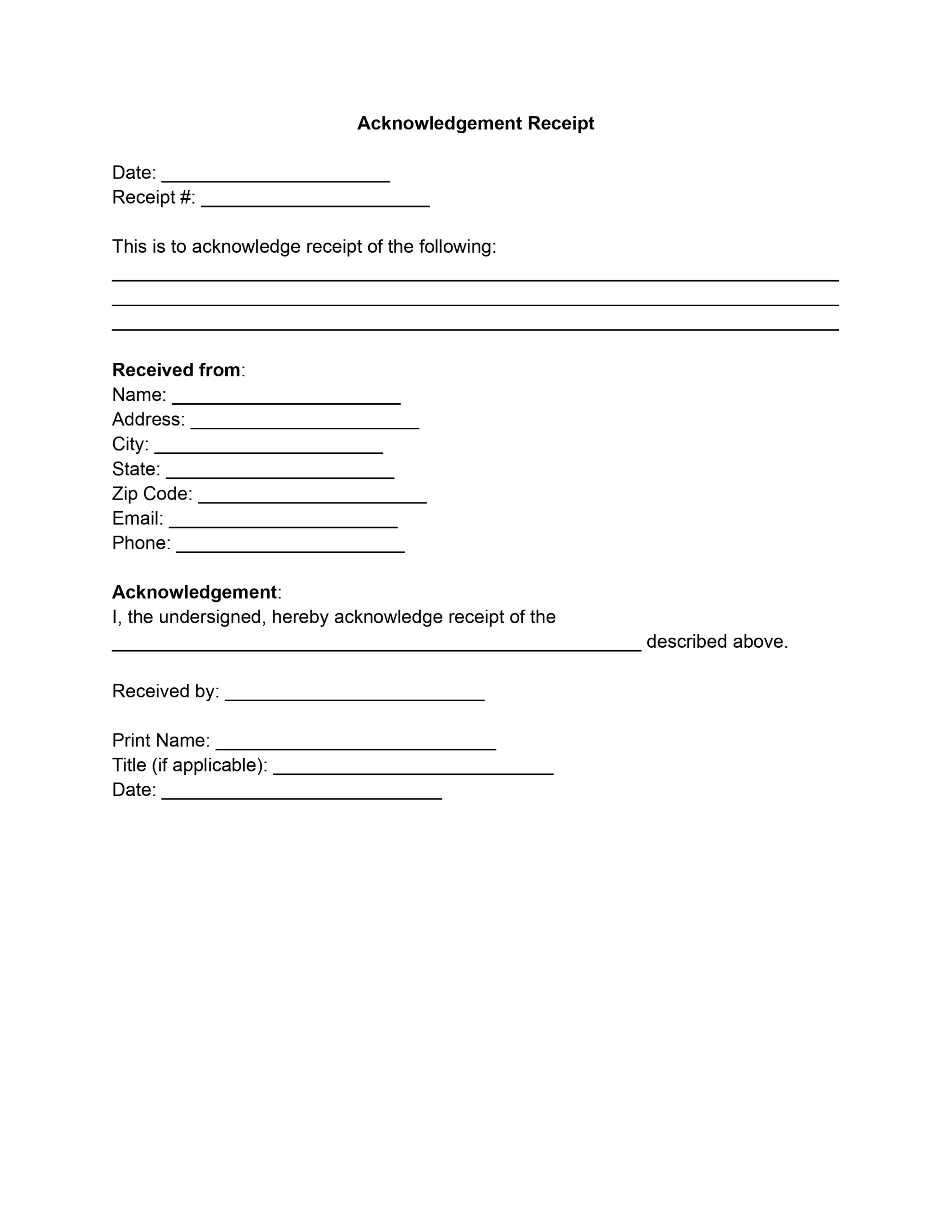The acknowledgment receipt ensures the integrity and transparency of exchanges between parties in legal and business transactions. This seemingly simple piece of paper has immense value, providing a clear record of transactions that have taken place. Whether it’s the transfer of goods, payment for services, or the delivery of documents, you can use our acknowledgement receipt template to verify the transaction.
What Is an Acknowledgement Receipt Form?
An acknowledgment receipt is a formal document that verifies the receipt of goods, services, payments, or documents between two parties. It shows evidence of a transaction, detailing what was exchanged, from whom, to whom, and when. This document is crucial in legal and business contexts as it provides a tangible transfer record, ensuring transparency and accountability for all involved.
The primary purpose of an acknowledgment receipt is to acknowledge that one party has received something of value or importance from another. You can also use this form to confirm the submission of documents, receipt of goods, or completion of services. By signing the filled acknowledge receipt template, the receiving party agrees that they have received the items or services as described in the document.
What sets acknowledgement of receipt form template apart from other receipts is their explicit confirmation of receiving goods or services and understanding between the parties. This form can include detailed information about the transaction, such as the date and time, a description of what was exchanged, and the terms or conditions associated with receiving goods or services.
Key Elements of an Acknowledgement of Receipt Template
Creating an effective acknowledgment receipt requires attention to detail and an understanding of the essential elements that should be included. Here’s a breakdown of the key components this document contains:
- Date and time of the transaction. This establishes the exact moment the transaction occurred or the document was submitted, creating a clear timeline.
- Details of the parties involved. It includes the sender’s and receiver’s names, addresses, and contact information. This information is critical for identifying the entities involved in the transaction.
- Description of the transaction. This section provides a detailed account of what is being received, such as the payment amount, nature of the document, or description of goods or services. It ensures clarity about what the acknowledgment covers.
- Statement of acknowledgment or receipt. A formal declaration that the receiving party received the item, payment, or document as described.
- Additional notes or terms. This section might include conditions of the received item, confidentiality agreements, warranties, or any other terms agreed upon before the transaction.
- Signature of the receiving party. It provides a legally binding confirmation that the receiver acknowledges the receipt of the goods, services, or document as described in the receipt.
These key elements in a proof of receipt template ensure the document’s effectiveness and strengthen the transaction’s legal and professional foundation. This structured approach minimizes misunderstandings and disputes and promotes a transparent and trustworthy exchange between parties.
Filling Out Acknowledgment of Receipt Template
By following these steps, you can accurately fill out an acknowledgment receipt template and create a reliable record of transactions.
1. Date and Time of the Transaction
Start by entering the date and time when the transaction occurred or the document was submitted. This timestamp is crucial for record-keeping and future reference, ensuring the transaction is accurately logged.
2. Details of the Parties Involved
Include comprehensive information about the parties involved in the transaction. You should cover the sender and receiver’s names, addresses, and contact information (phone number, email, etc.). Ensuring these details are accurate and complete is essential for any follow-ups or clarifications needed.
3. Description of the Transaction
Provide a detailed description of what is being acknowledged. It might include the payment amount, the nature of the document submitted, or a description of the goods or services exchanged. Be as specific as possible to avoid any ambiguity about what the acknowledgment receipt covers.
4. Statement of Acknowledgment or Receipt
Include a formal statement confirming receipt of the items, services, or documents described in the previous step. This acknowledgment should be unequivocal, indicating that the receiving party agrees they have received what was intended.
5. Any Additional Notes or Terms
Document any special conditions associated with the transaction, such as the condition of a received item or confidentiality agreements, in this section. These notes can be crucial for outlining the specifics of the agreement and any obligations or expectations of the involved parties.
6. Signature of the Receiving Party
The final step is for the receiving party to sign the acknowledgment receipt. This signature legally confirms the receipt and acceptance of the goods, services, or documents. Ensure that the person signing has the authority to do so on behalf of the involved party or organization.
